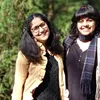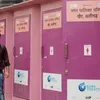Education Day: these 5 teachers are going the extra mile by taking learning to disadvantaged children
Education remains a privilege for many children growing up in lower income houses. But these 5 educators are making the best use of resources to ensure maximum children experience the true joy of learning.
A teacher is a child’s first memory of learning and formal education. But despite education being a basic human right, many children - especially in rural India - are denied this.
However, a few who truly appreciate the power of learning have fought the odds to encourage and teach disadvantaged children. These teachers have made it their life’s mission to cultivate and feed the curiosity of India’s younger generation.
On World Education Day, SocialStory pays a tribute to five teachers who have gone the extra mile and helped educate children.
Rajesh Kumar Sharma
Rajesh Kumar Sharma has been bringing quality education to around 300 underprivileged children in Delhi for the past 13 years now. The Free School Under the Bridge, as it is called, runs in two shifts, near the Yamuna river bank in Delhi. It begins from 9-11 am for 120 boys, and again from 2-4.30 pm for 180 girls. Most of the students are children of ragpickers, rickshaw-pullers and beggars, who lack the opportunity to study otherwise.

Rajesh Kumar Sharam (Image: Darpan Magzine)
Rajesh is helped by seven other volunteers who teach students, aged four to 14 years. The school does not have a structure and functions with minimum facilities; five different coatings of black paints on the wall are used as blackboards, a carpet is laid on the ground for students to sit on, and basic necessities such as chalk and dusters are provided for teachers.
While there was scope for improving the condition through support of several NGOs that contacted him, Rajesh is particular that these organisations show a genuine interest in their education. However, he welcomes generous offerings of snacks, water, and occasional celebration of birthdays with students, under the bridge.
Rishab Anand
Former journalist Rishab Anand was concerned by the state of traffic and the low awareness among Indians regarding rules. Seeing this, he started a non-profit organisation, Rise Up, in Ranchi, his hometown, and started poster campaigns. The initiative was able to garner the people’s attention and he soon organised awareness programmes with the municipality and police.
Today, the organisation conducts road safety workshops in 250 schools and colleges, spread in five cities.
Switching to a more sustainable model in 2016, he started the Cartoon Playschool where children learn about traffic rules such as lane driving, using seat belts and helmets, and following traffic lights, among others. They also get a practical idea through a traffic park set up in school.
Dattatray Ware
Dattatray Ware (43) is changing the reality of learning at Wablewadi Zilla Parishad School, ever since he was transferred in 2012. Also known as the International Ojas School, children here get to learn by using modern technologies such as artificial intelligence (AI), robotics, animation, sound engineering, video editing, and recording.
Located 45 km from Pune, the school has about 530 students (up to Class 9) from nearly 26 neighbouring villages . The number has increased from just 25-30 to 130 students in pre-primary section, over 400 students in primary section, and more than 1,000 students waiting.

Dattatray Ware teaching his students (Image: The Logical Indian)
The International Association for Human Values (IAHV), a sister organisation of The Art of Living, has extended support and helped gather resources from global investments company BNY Mellon. The firm has built eight zero-energy classrooms equipped with solar energy and rainwater harvesting, including high-end equipment for sound engineering machines. It also provided tablets, laptops, and artificial turf and tools for 3D animation and robotics.
The school will soon follow the international curriculum of the Maharashtra International Education Board (MIEB).
Ruhi Danish Ashraf
Ruhi Danish Ashraf moved to Upper Subansiri district of Arunachal Pradesh in 2016 when her husband, Danish Ashraf, was posted there as an IAS officer.
She noticed that the three schools in the region were understaffed most of the time, which was affecting the academic performance of students. In fact, Class 12 in Government Higher Secondary School in Daporijo district did not have a physics teacher for over five years.
This did not sit well with Ruhi, an electronics engineer, who decided to teach students for free, despite having stage fear and no prior experience as a teacher. She started by familiarising herself with Class 12 concepts like optics, electromagnetic induction, and radiation from NCERT books. Ruhi also worked on providing visual content, often travelling to Delhi to download lesson videos as internet connectivity was poor in the hilly area.
However, in March 2019, her hard work paid off with as many as 80 percent of her students passing. In the previous year, only 21 percent of the students had cleared physics in Class 12.
Keshav Saran
The literacy and school dropout rates were high in Rampur district in Uttar Pradesh, where 70-year-old Keshav Saran was born. This is because schools were far and daily commute was not easy. It was also the reason Keshav could not continue his studies beyond Class 9. At 15, he had to turn to farming but did not part way with books completely.

Keshav Saran, (left) the 70-year-old farmer turned teacher.
Committed to make education accessible in the village, he started teaching what he had learnt of science, mathematics, and literature to the village children. On a typical day of his lessons, there would be around 200 students in his small two-room house.
In 1989, he decided to convert his farmland into a school where over 1,200 children gather. While he works in the field to grow potatoes, chillies, and tomatoes in the day, he teaches eager students every evening.
(Edited by Teja Lele Desai)










